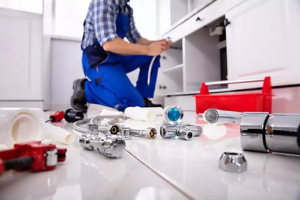A beautifully landscaped yard can enhance the appearance and value of any property, but maintaining a picture-perfect outdoor space often demands considerable time, effort, and resources.
Fortunately, creating a low-maintenance landscape that still looks great is entirely achievable with smart planning, thoughtful plant selection, and efficient design strategies. This Landscaping Services Honolulu HI approach not only reduces the time and money spent on upkeep but also provides an attractive and sustainable environment year-round.

Start With a Smart Design Plan
Every successful landscape starts with a solid design. The goal of a low-maintenance landscape is to minimize tasks like mowing, pruning, watering, and weeding without compromising beauty.
Key strategies include:
- Simplify the layout: Opt for clean lines, well-defined borders, and open areas that are easy to navigate and maintain.
- Limit turf areas: Lawns are high-maintenance features. Reducing the size of grassy areas or replacing turf with alternatives like ground covers, mulch, or gravel can significantly cut down on watering and mowing needs.
- Use hardscaping: Patios, walkways, rock gardens, and retaining walls add structure and visual interest while requiring little to no maintenance.
Choose Low-Maintenance Plants
Plant selection plays a crucial role in minimizing upkeep. Selecting the right plants for your environment ensures they thrive with minimal intervention.
Tips for choosing plants:
- Go native: Native plants are well-suited to local climates and soils, making them more resilient to pests and drought. Once established, they typically need less water and care.
- Opt for perennials: Unlike annuals, perennials return year after year, eliminating the need for seasonal replanting.
- Use evergreen shrubs: These provide year-round greenery and structure without seasonal changes or high maintenance.
- Avoid fast-growing species: These often require more frequent pruning and management.
When planting, group species with similar water and sunlight needs to make care easier and more efficient.
Mulch for Moisture and Weed Control
Mulch is one of the most valuable tools in a low-maintenance landscape. It suppresses weed growth, retains soil moisture, regulates temperature, and reduces erosion — all of which minimize the need for frequent watering and weeding.
Mulching tips:
- Apply a 2-3 inch layer of organic mulch (like bark, wood chips, or compost) around plants and trees.
- Avoid piling mulch against stems or trunks to prevent rot.
- Refresh mulch once or twice a year to maintain effectiveness and appearance.
In areas where mulch might not be practical, consider using decorative stones or gravel for a similar low-care solution.
Incorporate Drought-Tolerant Features
Designing with water conservation in mind is both eco-friendly and practical. Drought-tolerant landscaping, also known as xeriscaping, uses techniques that minimize water use while still achieving a lush look.
Drought-friendly ideas:
- Select naturally drought-tolerant plants, such as succulents, ornamental grasses, and Mediterranean herbs.
- Group plants by their water needs to avoid overwatering drought-hardy species.
- Use drip irrigation systems that deliver water directly to roots, reducing waste and preventing evaporation.
- Choose permeable surfaces like gravel or pavers with gaps, which allow water to drain and recharge soil.
Install Efficient Irrigation Systems
Manual watering with hoses or sprinklers can be time-consuming and often leads to overwatering. Instead, automated irrigation systems can be programmed to deliver the right amount of water to each part of the landscape.
Advantages of smart irrigation:
- Saves time and water
- Reduces plant stress
- Prevents overwatering and runoff
- Can be set to water early in the morning or late evening for maximum absorption
For even better efficiency, consider adding rain sensors or soil moisture detectors to avoid watering when it’s unnecessary.
Minimize Lawn Areas
Traditional lawns demand frequent mowing, watering, and fertilizing. Reducing or eliminating grass can drastically lower your landscape maintenance workload.
Alternatives to lawn:
- Ground covers like creeping thyme, clover, or sedum
- Decorative gravel or crushed stone pathways
- Artificial turf for a green look without upkeep
- Raised planting beds or container gardens
If you prefer to keep some lawn, opt for slow-growing, drought-resistant grass varieties that require less frequent care.
Use Hardscape Wisely
Hardscape elements not only reduce maintenance but also add elegance and functionality to outdoor spaces.
Popular hardscape features include:
- Stone pathways
- Gravel patios
- Wooden decks
- Retaining walls
- Outdoor seating areas
Hardscape elements require minimal upkeep and are ideal for areas where plants may struggle to grow or where frequent foot traffic occurs.
Limit High-Maintenance Features
Some landscaping features may seem attractive at first, but require more maintenance than expected.
Avoid or limit:
- Water features that need constant cleaning or pump maintenance
- Fragile plants that are prone to pests or diseases
- High-maintenance hedges or topiary requiring regular pruning
- Flowerbeds that need seasonal planting or daily care
By focusing on durable and low-effort features, you ensure your yard stays attractive without becoming a burden.
Keep Tools and Supplies Organized
Having the right tools easily accessible can make even minimal maintenance tasks feel effortless. Keep your tools clean, sharp, and stored in a designated area to save time when you need them.
Basic tools to have on hand:
- Pruning shears
- Rake
- Garden gloves
- Trowel
- Hose or watering can
- Wheelbarrow or cart
Investing in quality tools means less time fixing or replacing them and more efficient upkeep.
Maintain Regularly but Efficiently
Even low-maintenance landscapes require some attention. The key is to stay ahead of small tasks before they become bigger issues.
Maintenance tips:
- Weed briefly each week to keep growth under control
- Inspect plants for pests or diseases periodically
- Refresh mulch and check irrigation systems seasonally
- Prune dead or overgrown branches as needed
By handling tasks in small, consistent intervals, you prevent the need for labor-intensive projects later on.
Creating a low-maintenance landscape that looks great is all about thoughtful design, smart plant choices, and efficient systems. With the right strategy, you can enjoy a stunning outdoor space without spending every weekend working in it. From reducing lawn space to using mulch, hardscaping, and drought-tolerant plants, your landscape can become a peaceful, attractive, and easy-to-maintain extension of your home.
Whether you’re starting from scratch or redesigning an existing yard, the principles outlined above offer a foundation for lasting beauty and simplicity. A low-maintenance landscape not only saves time and resources — it also supports a healthier, more sustainable environment for years to come.








